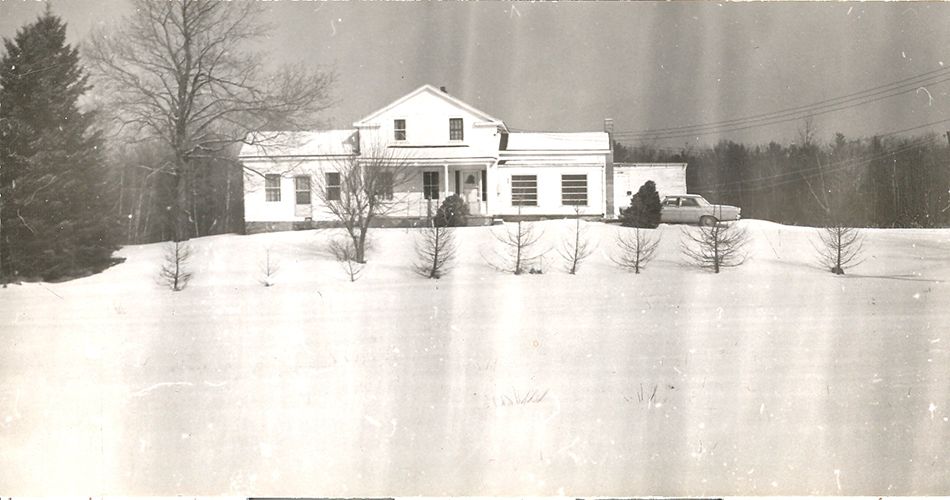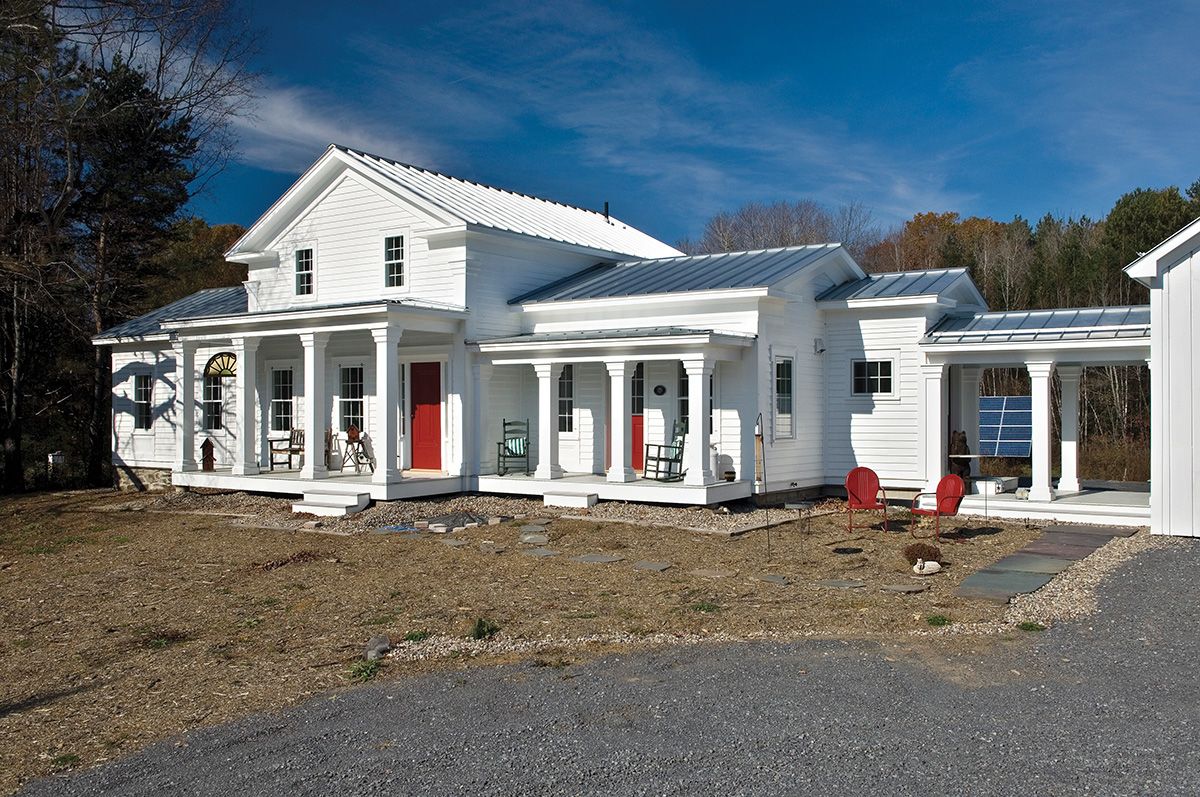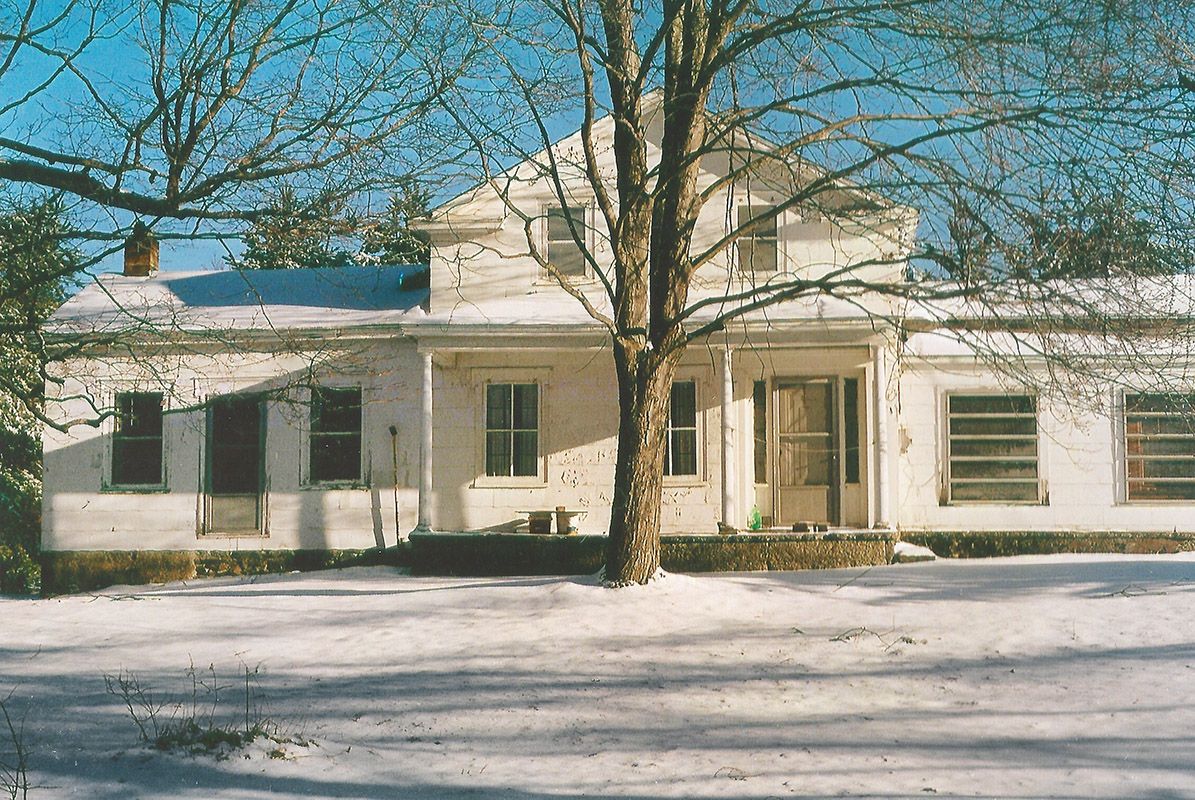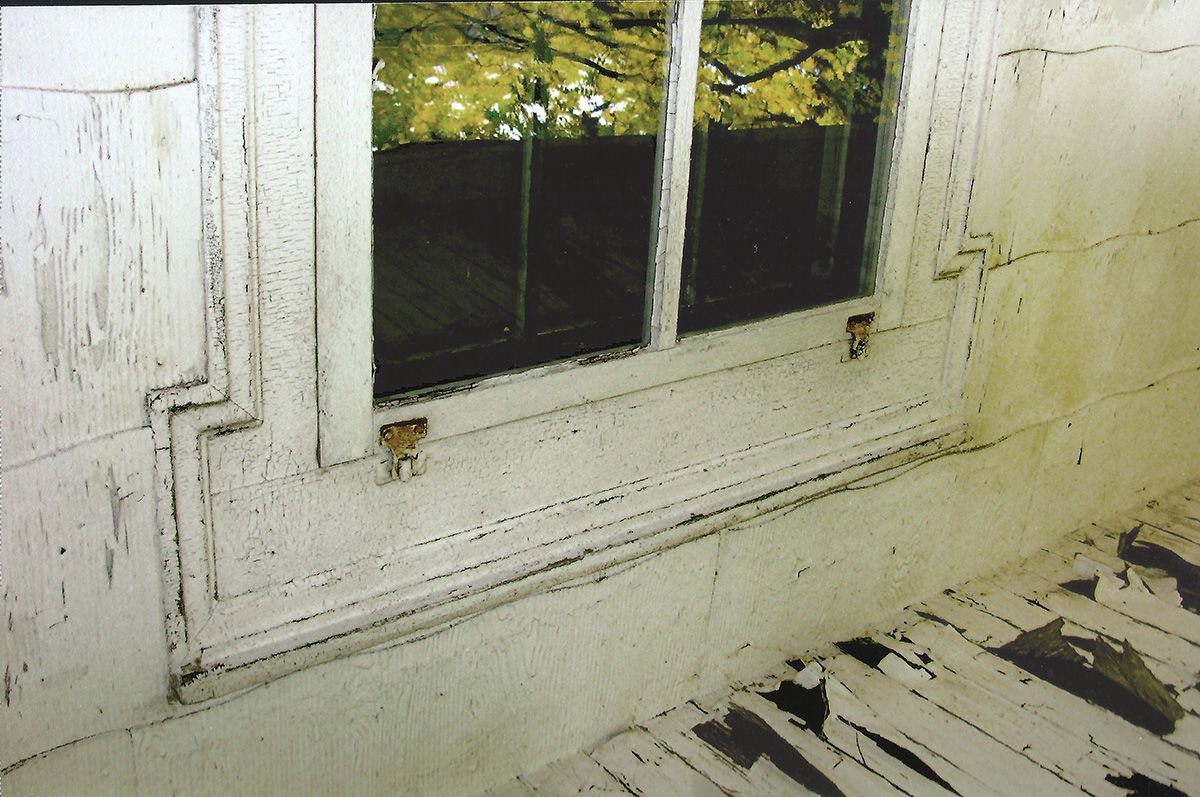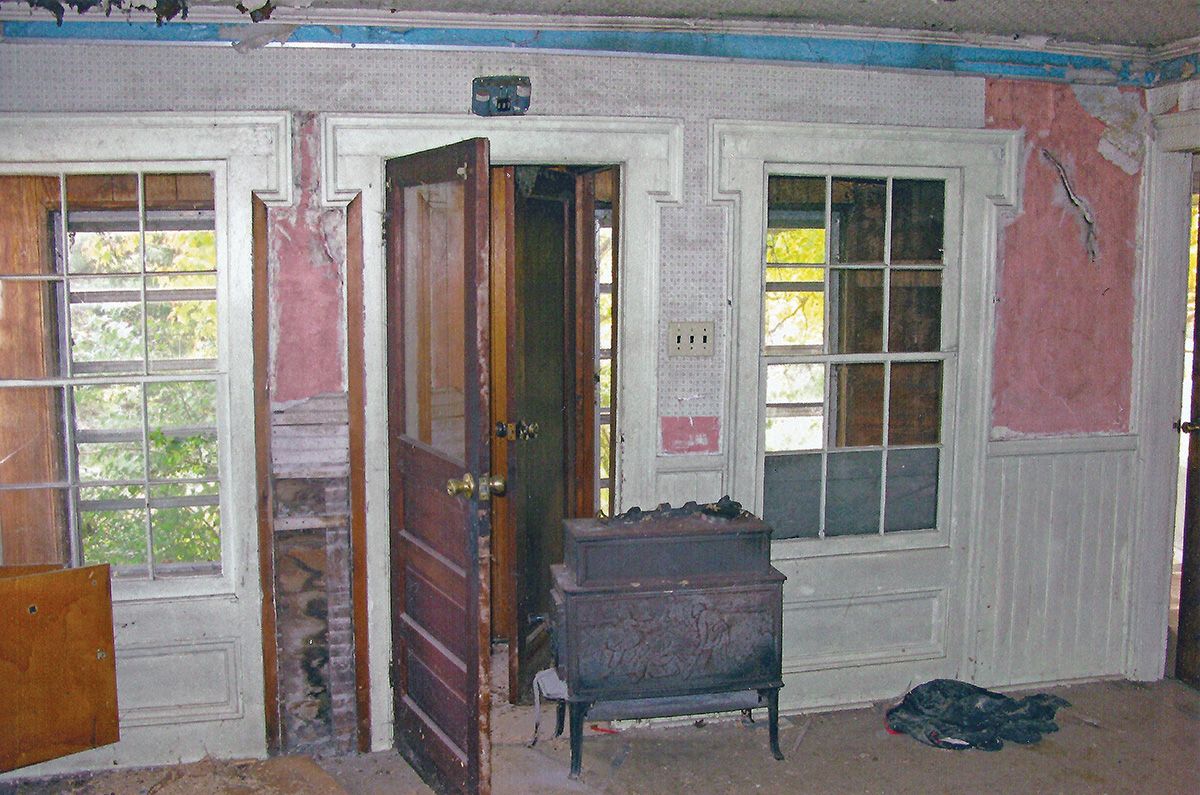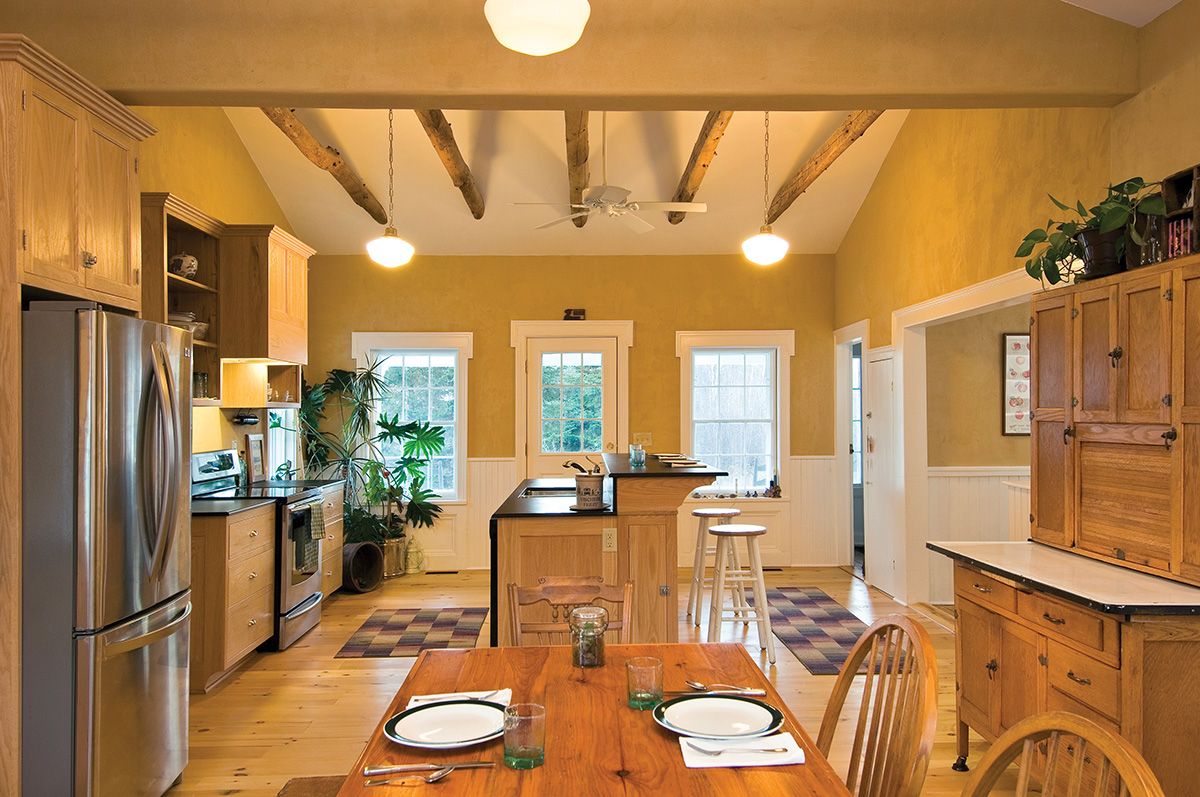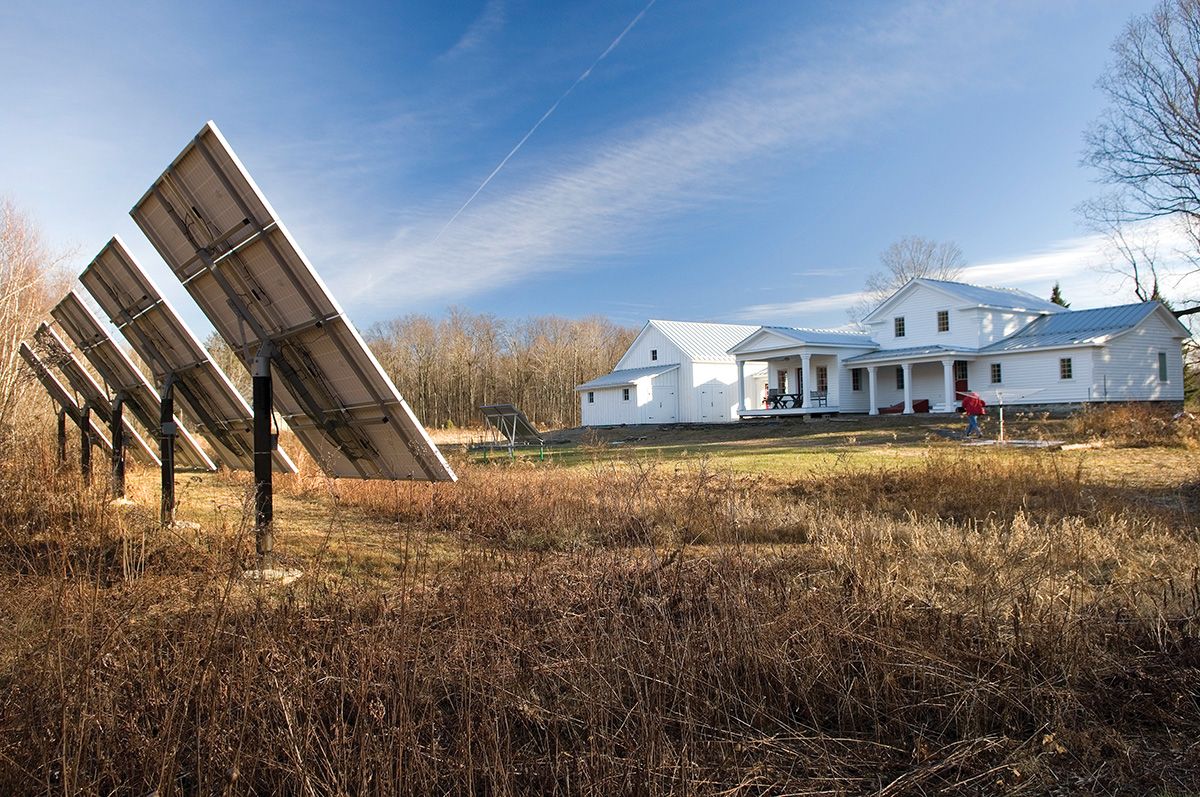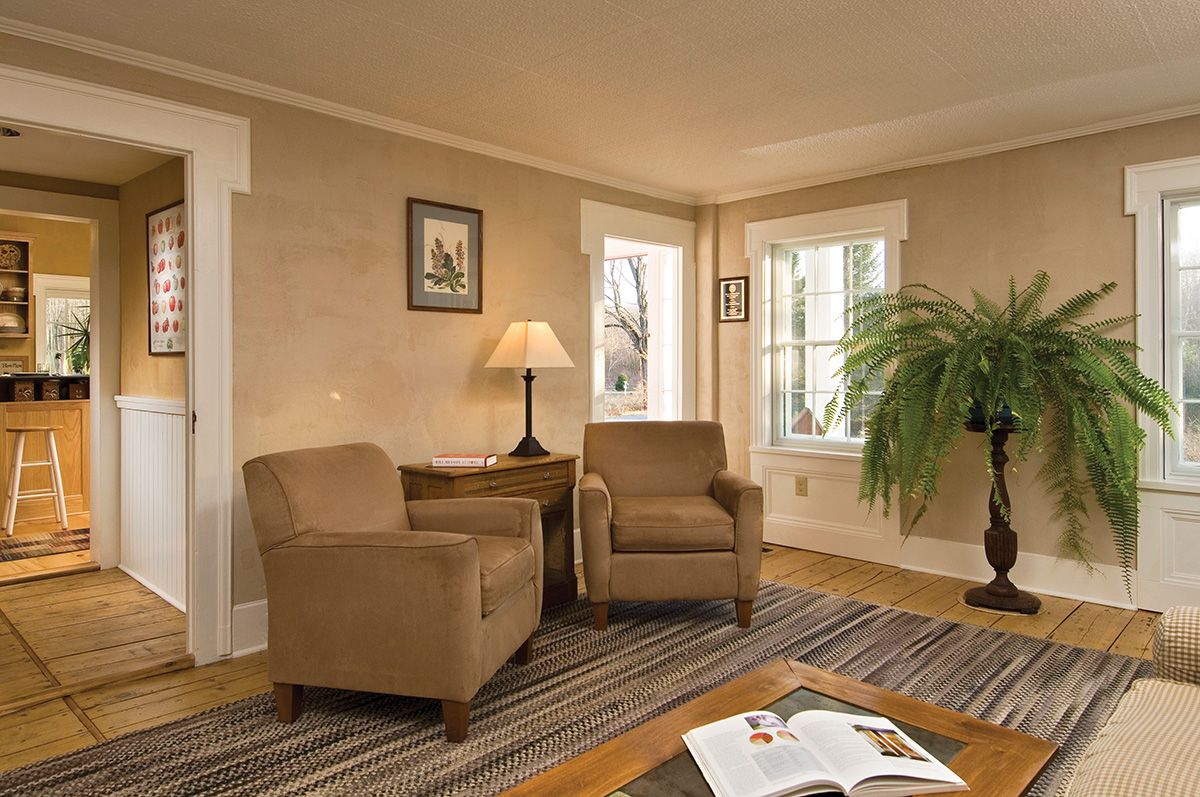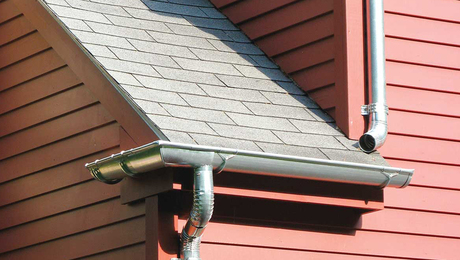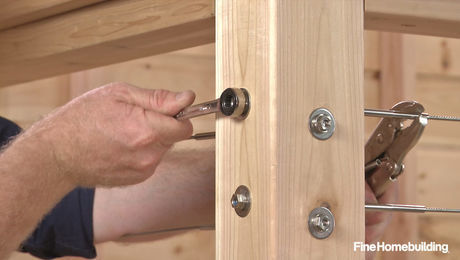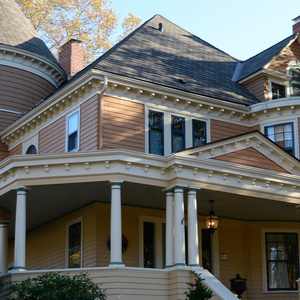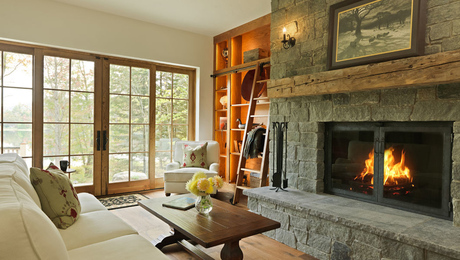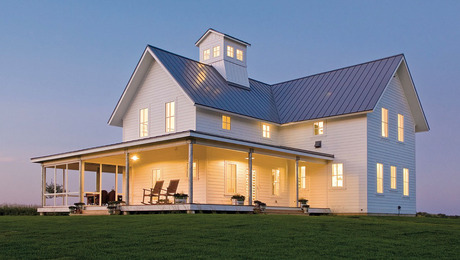Preserving a Greek Revival Farmhouse
Efficiency, solar power, and a sensitive kitchen for an 1830s house in New York.
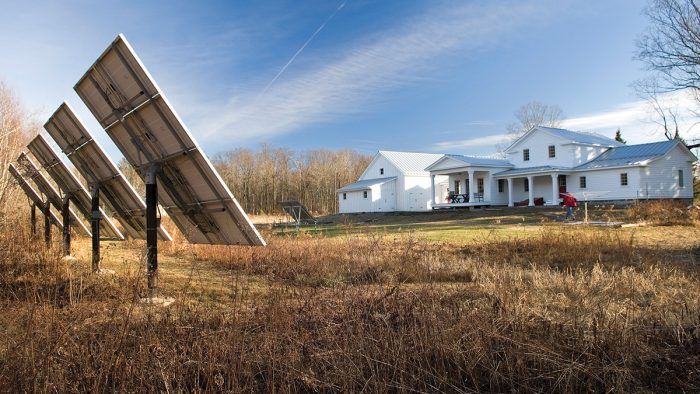
This wasn’t our first restoration. Back in 1990, we restored a house built in 1854— and got the energy-efficiency bug. We became energy nuts. Twenty years later, we were contacted by the town’s Historic Preservation Commission, who asked if we’d like to see an abandoned 1830s Greek Revival farmhouse in jeopardy. A developer wanted to knock it down. The town (in Upstate New York) wouldn’t permit demolition because the house is listed in the Clifton Park Register of Historic Places.
Love at First Sight
Well, we walked through the door and said, “oh look at this, everything’s intact.” The old house was amazing and we fell in love with it. They don’t make them like they used to. There was water in the basement. The roof leaked. Animals had moved in. Frozen sawdust was the only thing holding up the roof. Still, we loved the Greek Revival architecture and character, so we bought the house.
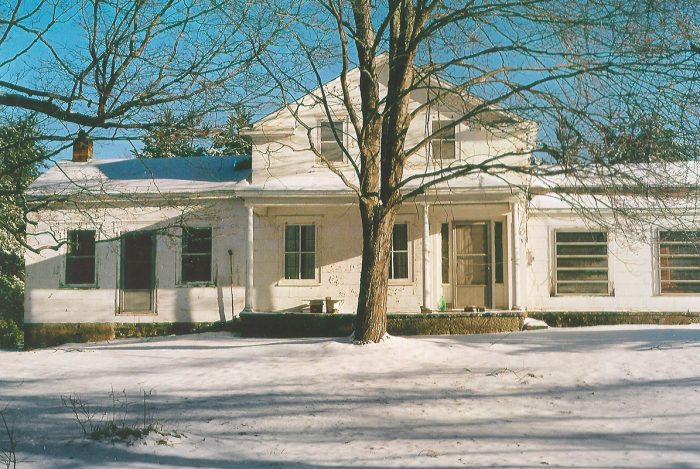
We had three goals for its restoration. We wanted to maintain the historic character, make it “green,” and move it toward net-zero energy consumption. A net zero-energy house is one that generates at least as much energy as it uses, if not more. We wanted to give up on fossil fuels and reduce the house’s carbon footprint now and for future generations.
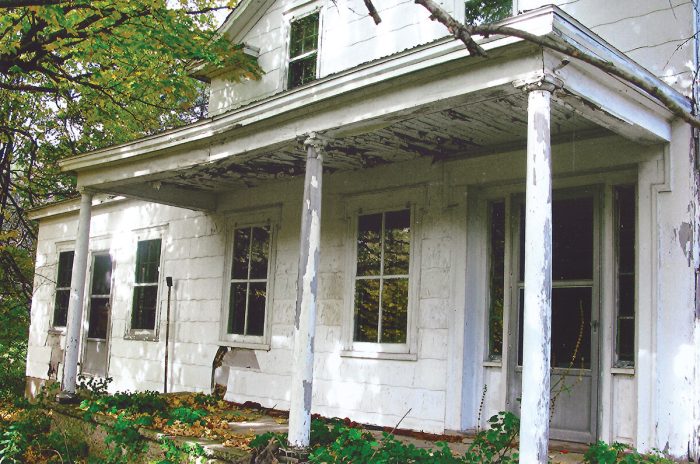 |
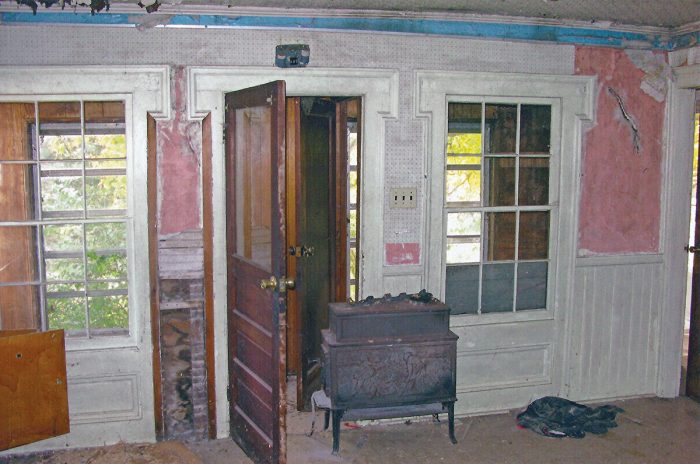 |
We saved as much as we could of the original structure. We kept the original mouldings—three different profiles—and, when necessary, had them replicated. We tore down the acoustical dropped ceiling and restored the vintage embossed tin underneath. The first-floor primary bedroom retains its original pine floors. Two more bedrooms and a bathroom are upstairs. We kept the original windows wherever we could.
| Editor’s note: Historical metal ceilings are available from W.F. Norman, who hand-stamp designs using original presses dating to 1898. |
The Remuddling of a Remuddle
We removed one wall to combine the kitchen and the old summer kitchen. We also raised the ceiling into the attic space. The original ceiling joists were still there, so we turned these rough-hewn pine tree trunks sideways and bolted them through the rafters to hold the walls together. That was for archi-tectural reasons as well as structural. It allowed us to vault the ceilings for more volume.
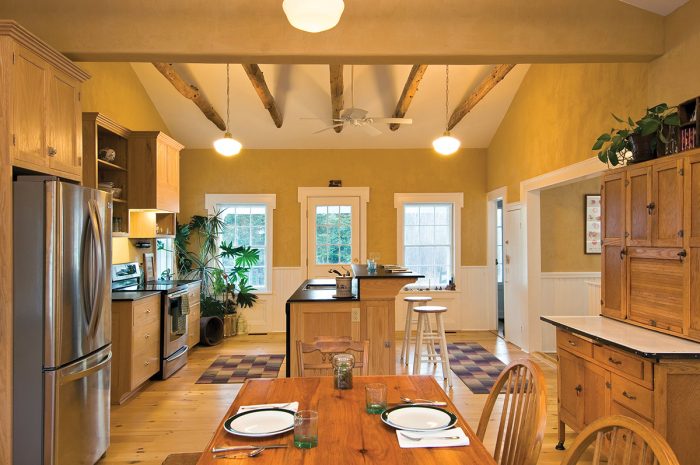 |
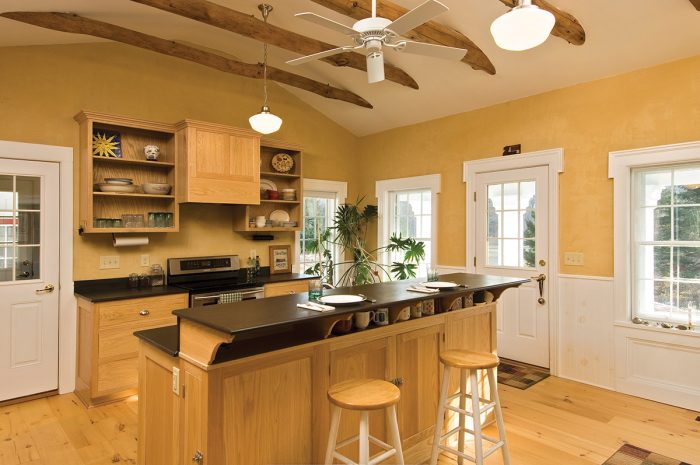 |
The 1960s remuddlings had to be corrected. The house had jalousie windows, an added concrete-block chimney, and a later-date attached garage, which we removed. We made the house as energy efficient as possible: In the basement, we installed a ground-source heat pump for both heating and cooling.
We built out the exterior wall by three inches and blew in soy-based, closed-cell foam insulation. (This was recommended ten years ago; we would not use soy-based foam again as it attracted rodents in this instance. We have used rock-wool insulation and would use it again.) We also used natural, no-VOC (volatile organic compounds) products.
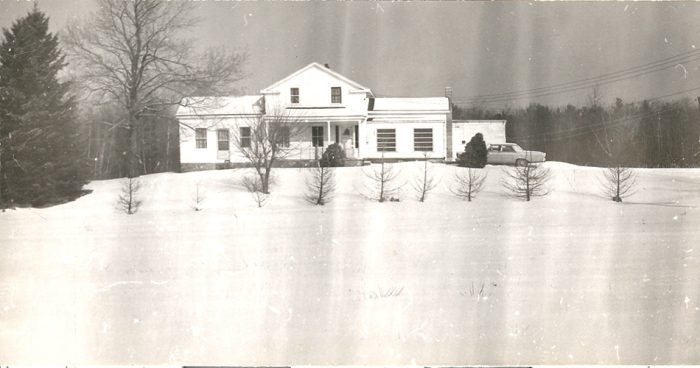
The Vermont Natural Coatings products we used on floors have been especially successful; they have turned out to be extremely durable and gave off no urethane odor during application. The American Clay finish on walls has a fresh scent even when the house has been closed up and has a gorgeous sheen.
We put in solar panels when we renovated. We currently produce more electricity than what we use, and that includes charging two electric cars. The best way to save energy is not to use it. We have an induction range, a solar-powered water heater, Energy Star appliances, LED lighting, and we do without a clothes dryer.
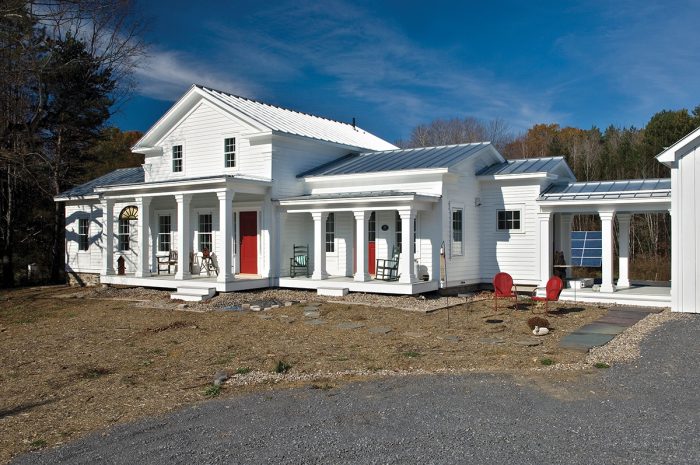
Instead of putting money in the stock market, we put it into those solar panels. I think the investment has really paid off for us. We pay $17.93 monthly, simply to be hooked up to the grid. We sell excess power back to the grid. It’s nice to see that meter spin backwards. Meantime, we saved a derelict historic gem of a house.
— Written by Joanne and Paul Coons. Photos by Randall Perry. Story produced by Joanne McFadden.
RELATED STORIES
Fine Homebuilding Recommended Products
Fine Homebuilding receives a commission for items purchased through links on this site, including Amazon Associates and other affiliate advertising programs.

Graphic Guide to Frame Construction

All New Kitchen Ideas that Work

A House Needs to Breathe...Or Does It?: An Introduction to Building Science

